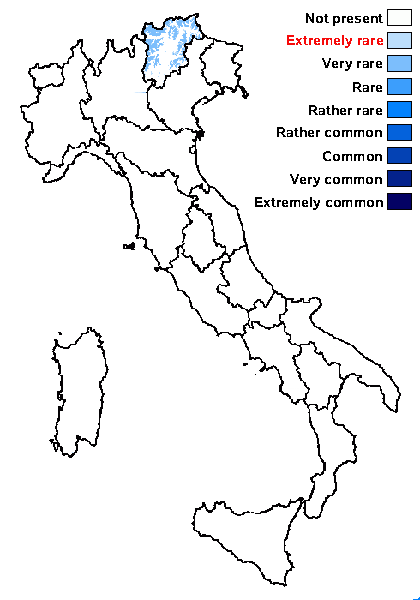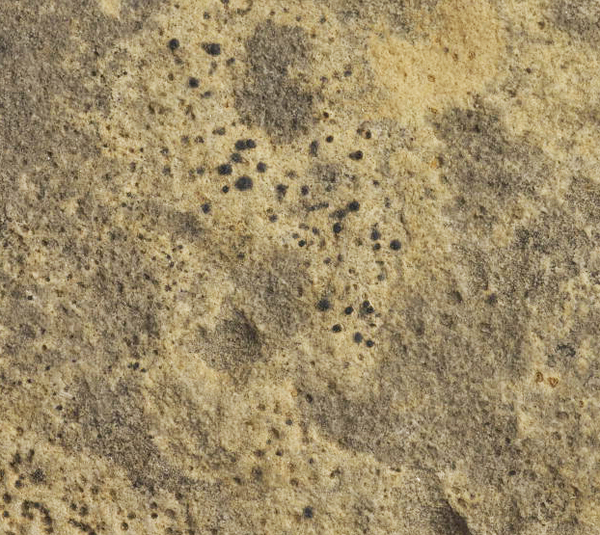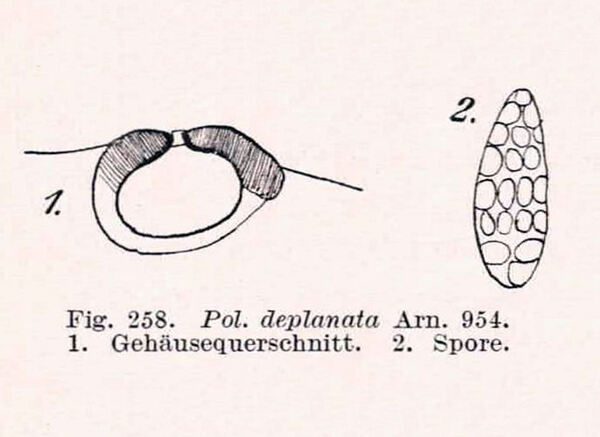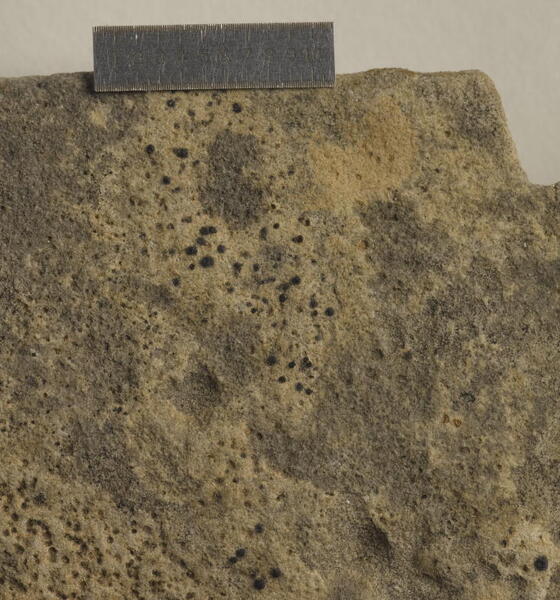Polyblastia deplanata Arnold
Verh. zool.-bot. Ges. Wien, 37: 128, 1887.
Synonyms:
Distribution: N - TAA (Nascimbene & al. 2022).
Description: Thallus crustose, endosubstratic or thinly episubstratic, continuous to irregularly rimose around the perithecia, whitish grey. Perithecia black, 0.4-0.5 mm across, 1/2-1/3 immersed and leaving pits in the rock, with a distinctly flattened apex. Involucrellum rather thick, limited to the upper half of the perithecium; exciple brown in upper part, colourless in lower part; hamathecium of periphyses and periphysoids, interascal filaments absent; hymenial gel hemiamyloid, I+ red (I+ blue at very low concentrations of I), K/I+ blue. Asci 8-spored, clavate, K/I-, fissitunicate, the wall thickened above, with a broad ocular chamber, dehiscent by extrusion of an endotunica to form a delicate rostrum. Ascospores muriform, with up to 8 transverse septa and up to 4 longitudinal septa, hyaline, ellipsoid, pointed at one end, 30-40(-42) x 14-18(-20). Photobiont chlorococcoid. Spot tests: K-, C-, KC-, P-, UV-. Chemistry: without lichen substances.
Note: on calcareous rocks near or above treeline; closely related to P. ventosa, poorly known and rarely collected.
Growth form: Crustose
Substrata: rocks
Photobiont: green algae other than Trentepohlia
Reproductive strategy: mainly sexual
Poorly known taxon in need of further study
Commonnes-rarity: (info)
Alpine belt: very rare
Subalpine belt: extremely rare
Oromediterranean belt: absent
Montane belt: absent
Submediterranean belt: absent
Padanian area: absent
Humid submediterranean belt: absent
Humid mediterranean belt: absent
Dry mediterranean belt: absent

Predictive model
Herbarium samples
Growth form: Crustose
Substrata: rocks
Photobiont: green algae other than Trentepohlia
Reproductive strategy: mainly sexual
Poorly known taxon in need of further study
Commonnes-rarity: (info)
Alpine belt: very rare
Subalpine belt: extremely rare
Oromediterranean belt: absent
Montane belt: absent
Submediterranean belt: absent
Padanian area: absent
Humid submediterranean belt: absent
Humid mediterranean belt: absent
Dry mediterranean belt: absent

Predictive model
| Herbarium samples |
 INDEX FUNGORUM
INDEX FUNGORUM
 GBIF
GBIF
 DOLICHENS
DOLICHENS




